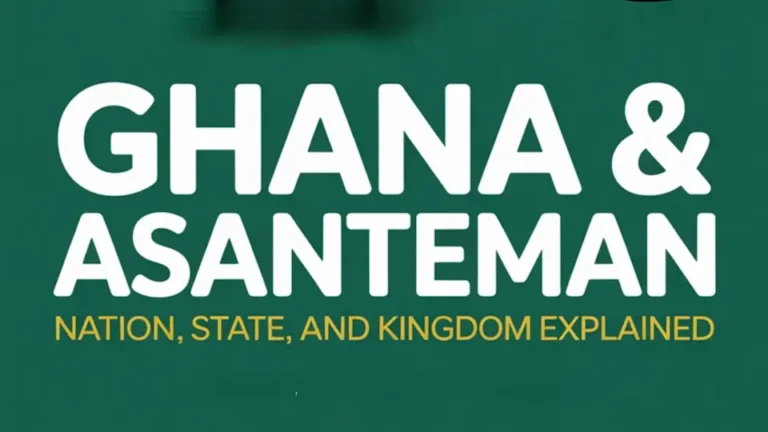The Porcupine (Kotoko) and Ashanti Identity: Symbol of Strength, Strategy, and Survival

In Ashanti culture, few symbols carry as much weight as the porcupine. Called kotoko in Twi, it’s known for its sharp quills and calm strength.
Over the generations, it has come to stand for courage, protection, and unity. You’ll find it in royal emblems, folktales, our Asante Kotoko team, and even family sayings.
The kotoko reflects core values that continue to shape Ashanti identity.

Struggling to Keep Track of All Your Kumasi Adventures? No worries!
With so much to see, do, and learn in Kumasi, it’s easy for the details to get lost. Want to make the most of your explorations? Then you need this FREE Kumasi Journal Set!
It’s perfect for recording your favorite spots, and cultural experiences, and even learning key Twi words and phrases to deepen your connection to Kumasi. Whether you’re a local or a visitor, this journal makes every moment count.
Why the Porcupine Matters in Asante Culture
The kotoko reflects how the Asante people see themselves: strong, alert, and united. The porcupine does not attack without reason, but when threatened, it defends itself with sharp quills.
That quality of strategic defense mirrors how the Ashanti fought to protect their land and people.
The phrase “Kum apem a, apem bɛba” (kill a thousand, and a thousand more will rise) reflects a deep sense of unity and persistence. It speaks to a cultural value passed down through generations.

From Army Emblem to Everyday Wisdom
During the height of the Ashanti Empire, the porcupine became the symbol of the Asante military. Warriors were trained to be sharp, patient, and ready to defend, not to strike first.
That mindset helped the Ashanti hold their ground during many battles, including resistance against colonial powers.
Over time, the kotoko also found its way into everyday language and wisdom. One well-known proverb says, “Wo nnwe kotoko akyi,” which loosely translates to “You don’t rub the back of a porcupine.”
- Wo = you
- nnwe = don’t rub (or scratch)
- kotoko = porcupine
- akyi = back or behind
This reminds people to respect boundaries and act with care.
Folktales also highlight the porcupine’s qualities. In one story, hunters learn strategy by watching how a porcupine uses its quills to stay safe.
These stories are simple, but they teach patience, caution, and the value of preparation.
Kotoko in Symbols, Sports, and Cultural Life
The kotoko appears in royal emblems, traditional carvings, and even patterns in kente cloth. Its image stands for strength and unity.
One of the clearest public symbols of the kotoko is found in sports.
Asante Kotoko Sporting Club, one of Ghana’s top football teams, proudly uses the porcupine as its mascot. Based in Kumasi, the team carries the same motto of resilience:
“Kum apem a, apem bɛba.”
The team was first called Kumasi Titanics, later renamed Ashanti United, and finally became Asante Kotoko with the official approval of the Asantehene.
Nicknamed the “Porcupine Warriors,” the club draws directly from the history of the Asante military, known for its defensive strategy and unity.
In 2025, the team marks its 90th anniversary, a reminder that kotoko remains a living symbol of pride and identity for many across the Ashanti Region.
Fans across Ghana wear the emblem with pride, not just for the game but for what it represents.

How Kotoko Lives On Today: In Festivals, Art, and Education
Cultural festivals in Kumasi, like Akwasidae, often highlight symbols that reflect Ashanti strength and heritage.
While the porcupine may not be the primary focus, its message shows up in music, dance, and traditional ceremonies that emphasize courage and togetherness.
The Asantehene, who is also known as Kotokohene (Chief of the Porcupine), carries this symbolism forward as both a traditional leader and a living figure of unity and defense.
Artists and musicians continue to draw inspiration from the kotoko. You can find kente patterns that reflect the shape of porcupine quills.
Drums and ivory trumpets may carry carvings or rhythms tied to the porcupine’s meaning. These creative works help pass on values in a way that speaks across generations.
In classrooms, museums, and cultural centers, students learn how the kotoko connects to Ashanti identity.
Whether through proverbs or displays, the message stays the same: be ready, be wise, and stand firm.

The Porcupine in the Wild
Real porcupines are also part of Ghana’s environment. They live in forests and savannas, but their habitats are shrinking.
Farming, logging, and road construction make it harder for them to survive. In some areas, they are hunted for meat or their quills.
Some wildlife parks now offer safe spaces where porcupines can live without threat. At Owabi Wildlife Sanctuary near Kumasi, the brush-tailed porcupine is one of several protected species.
Education programs also help change how people view them. When people understand their role in nature, they are more likely to see porcupines as animals worth protecting.
Kotoko as a Living Legacy
Kotoko continues to carry meaning for many Ashanti people today. It’s part of how identity, history, and values are remembered and lived.
Whether seen on a jersey, a carved stool, or a flag, it reminds people to stay alert, move with purpose, and know where they stand.
You’ll still find kotoko across Kumasi, in homes, markets, schools, and stadiums, respected and familiar.
When you see kotoko, what does it bring to mind?

AKWAABA!! IF THIS POST CAPTURED YOUR ATTENTION, KEEP EXPLORING KUMASI WITH US AT ExploreKumasi.com. Yɛdaase!
You’ll find cultural guides, historical insights, and travel resources to help you experience Kumasi and the Ashanti Region more deeply.
💬 Want to stay connected? Join our community on Facebook to share your thoughts and discoveries.
📌 Inspired by what you read? Pin an image to come back later or share with someone planning their own Kumasi journey.
Thank you for exploring with us.






